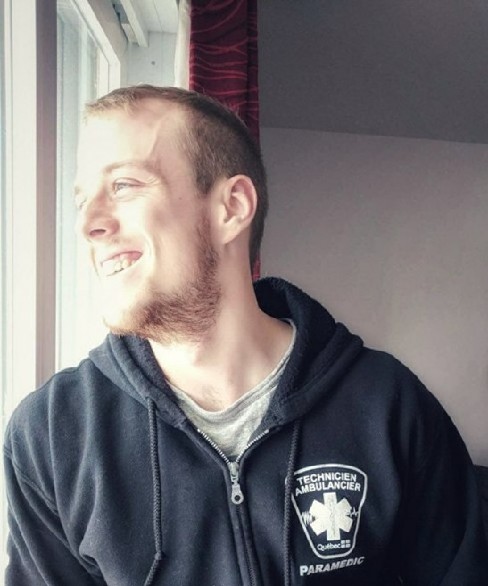Treating trauma in the field and the usefulness of the MARCHE mnemonic
Introduction
When dealing with trauma, speed and efficacy are essential. I learned multiple ways of treating trauma patients ranging from falls to gunshots and IEDs. As part of my TCCC (Trauma Combat Casualty Care) training, I’ve learned to use MARCH as an algorithm in order reach all the important points of treating trauma. When I switched to paramedicine as a civilian they thought me LABCDE (LOC, Airway, Breathing, Circulation, Deficit neurological, and Evac.). Which was quite different than MARCH given the fact that I was now treating falls and MVC’s rather than blown up limbs and tension pneumothoraces. I, however, am not a big fan of LABCDE, it’s harder to remember and encompasses obvious treatments while leaving out important ones. I’ve decided to combine both protocols to make a more accessible and universal mnemonic for treating trauma both in a theater of operations (TCCC) and in the civilian world (Paramedics). The following applies to operations as well as civilian interventions.
When approaching a trauma scene, safety is primordial. Assessing the scene for dangers associated with the call will help you identify risks as well as the potential mechanism of injuries (MOI) for yourself and the patient. Being able to identify possible MOIs will help you choose the best course of action for treatment. Look ahead, left, right and above. This also applies to scanning your environment, tagging potential targets and securing the scene during military operations. If necessary, take the time to eliminate risks before proceeding to your patient.
Once the scene is secured and potential risks have been eliminated, analyze how many patients are present. Multiple patients will require a different approach and in MCI (Multiple-casualty incidents) situations, triage will be necessary.
Following the identification of potential patients, a distance quick look of your patient(s) will inform you of possible complications to expect. Looking for obvious bleeds and deformities, level of consciousness, patient positioning, and possible MOIs may help you determine what to expect during the intervention.
Once all that is done, approaching the patient must be done verbally, while informing him or her of your presence. Telling him not to move while simultaneously introducing yourself are important steps in patient contact. Immediate manual cervical immobilization must be done. Intro, assess and stabilize. Introducing yourself, assessing AVPU and stabilizing your environment as well as taking spinal precautions are the essentials to establishing a good foundation for the treatments/interventions that come next.
Only after all the previous steps are taken that you may proceed. If none of the previous can be done because you are under fire, return suppressive fire and drag patient to safety. If the patient cannot be treated in the field, evacuation must be done ASAP.
The MARCHE Protocol
The MARCHE protocol
-
Massive hemorrhage control (tourniquets and hemostatic dressings)
-
Airway management (including surgical cricothyroidotomy) (JE Triple-A)
-
Jaw thrust
-
Equal chest rise
-
Any obstructions caused by tongue, teeth or other debris
-
Any tracheal deviations or obvious deformities
-
Any need for emergency airway management including intubation, NPA or OPA (Careful with possible facial trauma and the use of an NPA)
-
-
Respiratory management (occlusive dressings for open pneumothoraces and needle decompression for tension pneumothoraces) (NEO)
-
Noticeable noises or abnormal patterns that may indicate secondary trauma
-
Expose locally PRN
-
O2 and/or assist ventilations PRN, assess quantity and quality
-
-
Circulation (BIFT)
-
Bleeding control (other non-threatening bleeding)
-
Intravenous/intraosseous access
-
Fluid resuscitation (HSD as a volume expander or simple LR)
-
Tourniquet assessment and replacement with dressings if applicable
-
-
Hypothermia (Cover pt if necessary)
-
Head injury
-
Assess pupils (PERRLAC*)
-
Neurological Deficits (Ask pt to move fingers, toes and stick out tongue)
-
Orientation x3 (Place, Time and Event)
-
GCS
-
-
Everything else (M-PHAATS-D)
-
Monitoring (on scene if stable or potentially unstable. En route if unstable. Look for signs of ICP)
-
Pain control as per protocol
-
Head to toe (if stable complete secondary assessment and spinal immobilization PRN)
-
Address all wounds (Minor lacerations that have stopped bleeding but may require intervention, evisceration, and impalement)
-
Antibiotics (if protocol applies)
-
Tactical evacuation preparation (Backboard, Vacant, or other methods available)
-
Splinting (if necessary, 5P’s** or SMCCT***) and check signs of increased compartment pressure
-
Documentation of care (PCR)
-
*PERRLAC= Pupils, Equal, Round, Reactive to Light and Accommodation Consensually
**Pallor, pain, pulse, paralysis, and paresthesia
***Sensory, Motor, Circulation, Color, and Temperature



